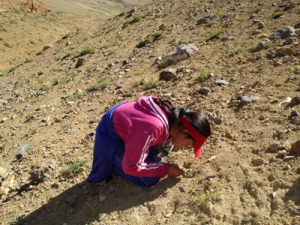Teaching 'All living things on earth are connected' (and not miss the whole point)
"Understanding basic ecological concepts (and their meaning in our daily lives) is too important to leave to a chance meeting or a talk."
Steve Van Matre
"If you didn't design it, you shouldn't assign it"
Alfie Kohn
Exploring biodiversity: A Guide for Educators
Fun visuals from the United Nations to build upon:
Aichi Biodiversity Targets
BEAN, otherwise known as
Steve Van Matre
"If you didn't design it, you shouldn't assign it"
Alfie Kohn
Teaching any concept in this day and age educators find themselves privy to countless activities to supplement their teachings. A problem with
this, including myself in cases, we justify these fragmented activities as properly
pulling students to conclusions of the interconnection of life on the planet.
A reason why this teaching problem exists is the overabundance
of fragmented and one-shot activities. In the case of ecology and biodiversity,
these one shot activities cover a topic in our 'program of studies' (my provinces
common core curriculum) utilizing prescribed labs and collections activities that
won’t get the job done.
As the quote from Mr. Kohn above boldly states teachers must design student’s expectations and there is no more important topic than biodiversity, that
requires teachers to design a learning program. One that entails not as much
thought on content and more thought on immersion experiences, sequential
activities that have an emotional connection with ecological processes. There
is not a list of links to follow to achieve this. It takes a teacher with a primary
vision to deepen students feeling with their local natural world using
place-based, immersion activities that demonstrate how all living things on
earth are connected. (there are some links below to what I attempt to base my learning
program on).
Van Matre drills it home stating: "we have always been
extremely suspicious of the claim that the way to produce environmentally
responsible citizens is to merely infuse the school curriculum with
environmental messages. And [we have yet] to find anyone who has done it…Oh,
there are some packages of activities and miscellaneous guides but no genuine,
integrated [personal] curriculum.”
Focused, sequential, local programming is the key for
advocacy of environmental education, not bagging up a batch of activities. We
must do better.
The NSTA (National Science Teachers Association) has greatly improved its activities, even though they
are easily bagged and not sequentially woven together by the teacher with local landscapes. Time for the next step:
“people who have broader understandings and deeper feelings
for the planet as a vessel of life are wiser and healthier and happier
themselves.”
Framework links I use to build learning programs for 'All living things on earth are connected:
Fun visuals from the United Nations to build upon:
Aichi Biodiversity Targets
BEAN, otherwise known as
Getting to know the earth must be a lifelong adventure full of wonder and joy...

